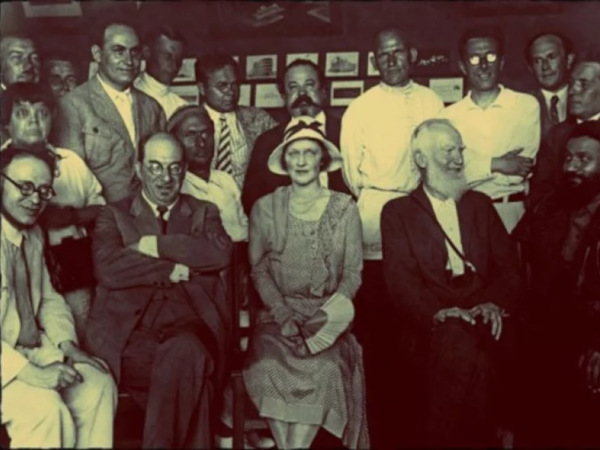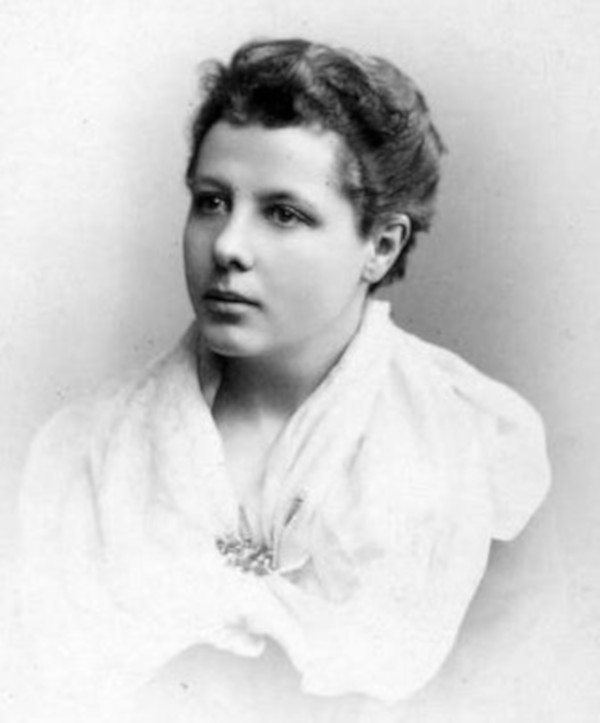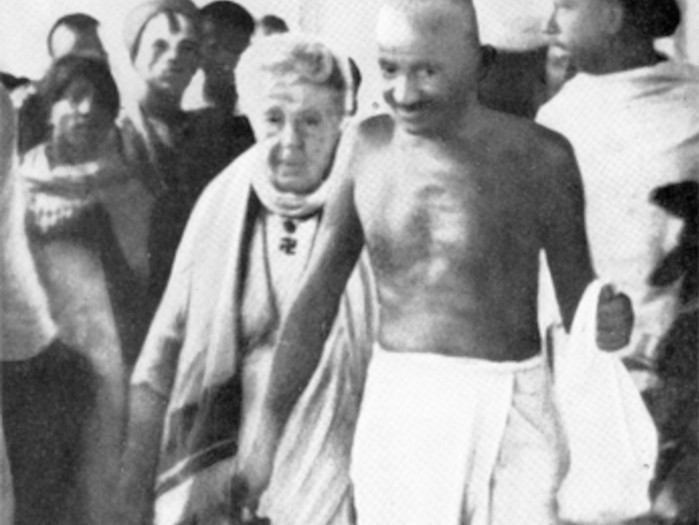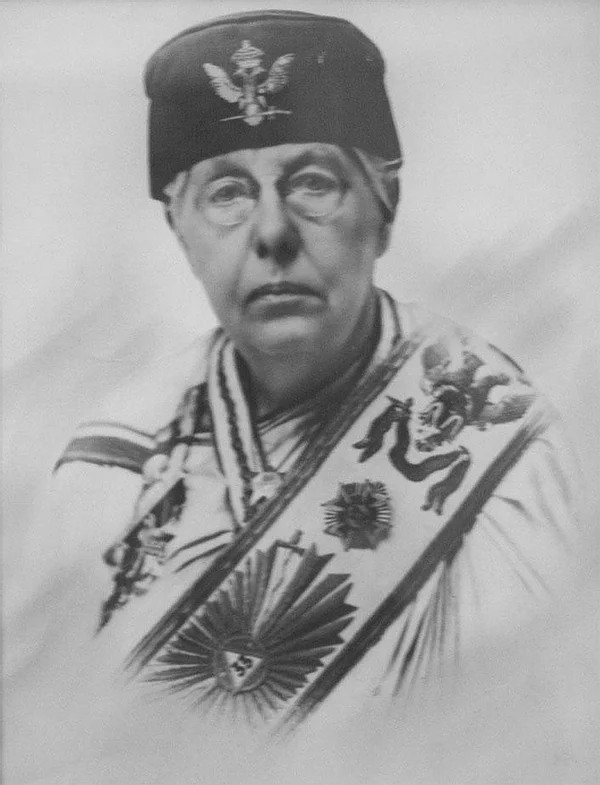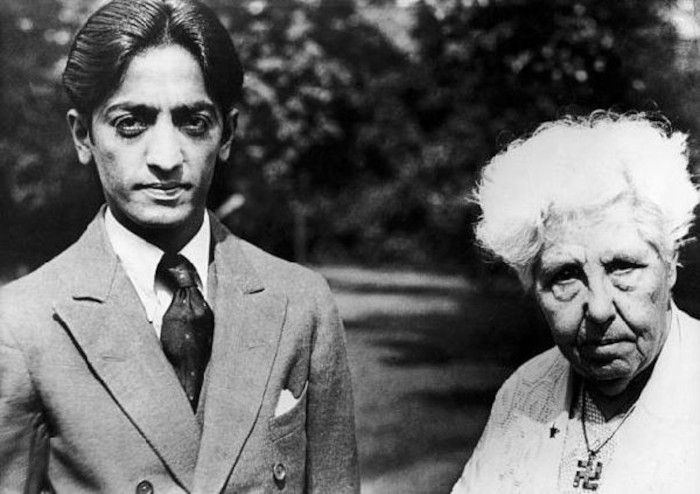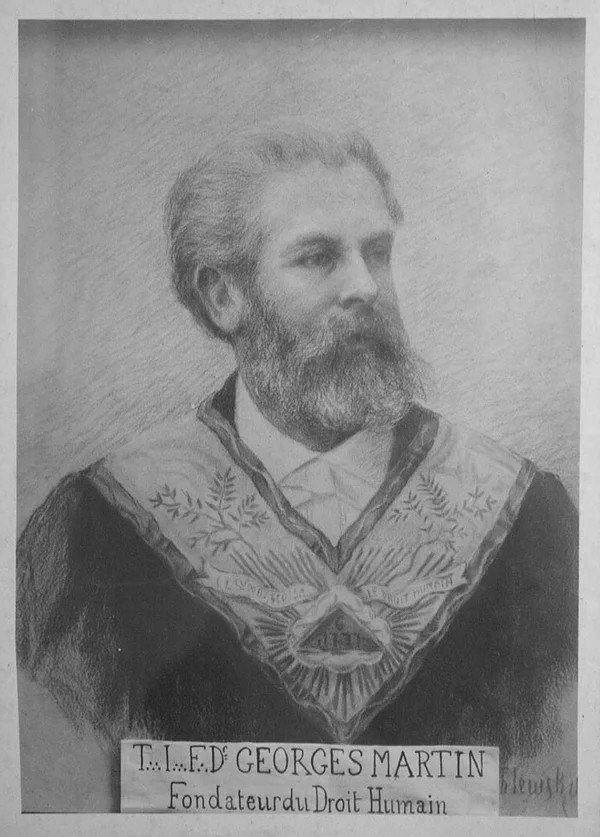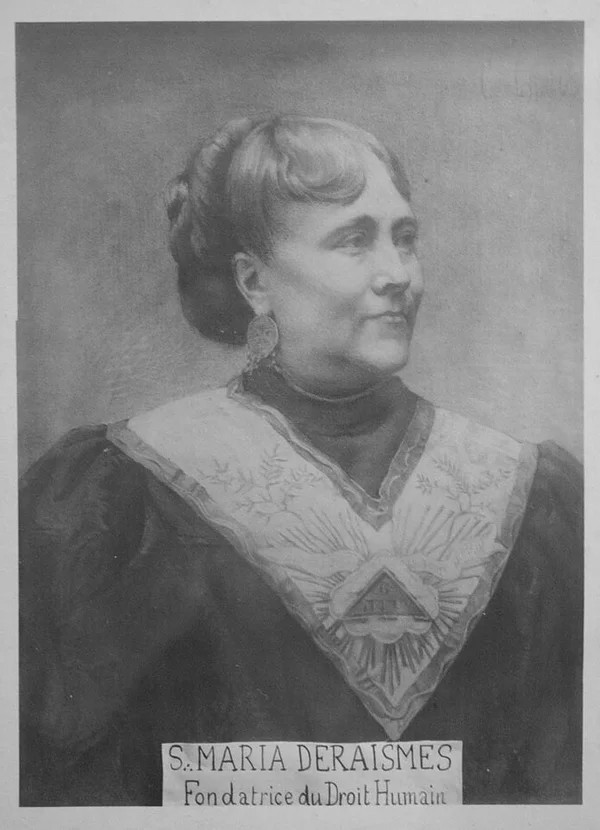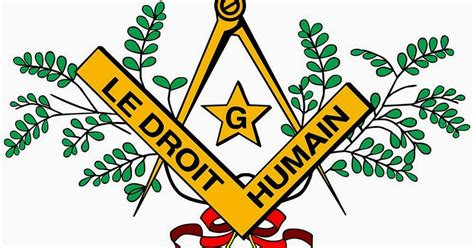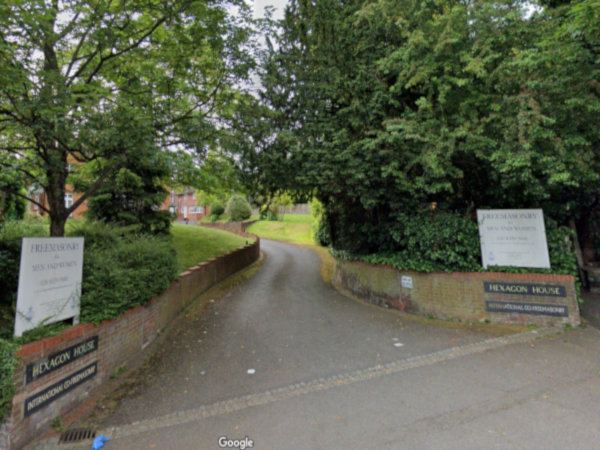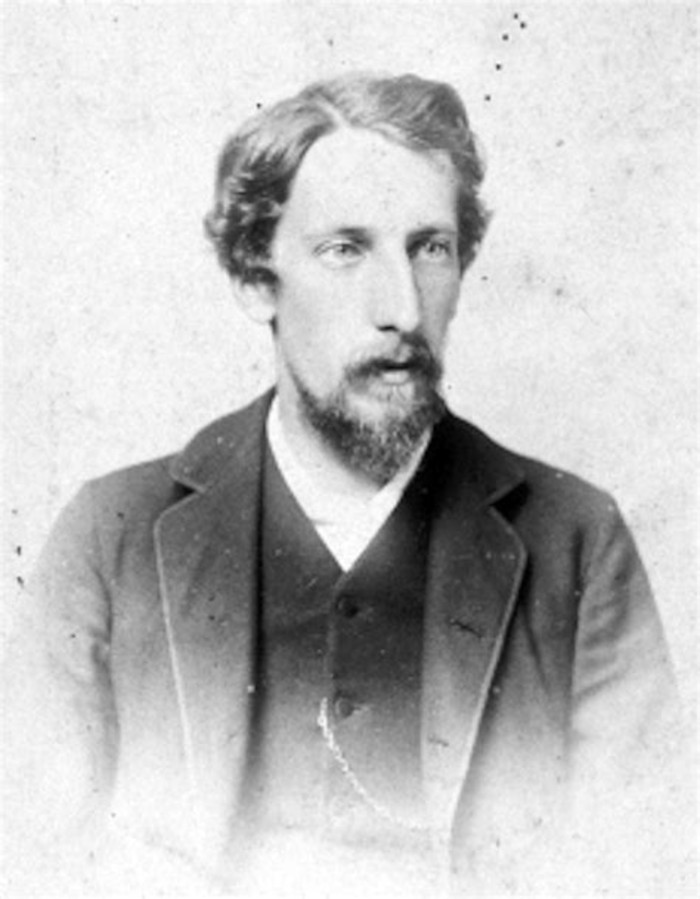
Member of Parliament for Doncaster North: Ed Miliband, speaking at the Fabian Society.
The Socialist-Capitalist Alliance: the Fabian Society, the Frankfurt School, and Big Business
Sourced from: Clare Ellis on 23rd June 2014
Most people with a critical interest in the Western policies and practices of multiculturalism and mass-immigration have probably heard of Cultural Marxism. This 20th century strain of Marxism produced by the Frankfurt School a.k.a. the Institute for Social Research in Germany, and later in New York where it was affiliated with Columbia University, is responsible for Critical Theory, PC, repressive tolerance, “diversity is our strength,” and other insidious tactics and strategies that are gradually stripping away the cultural traditions, ethnic identity, national sovereignty, and historical memory of the European peoples.
But do most people know the link of cultural Marxism, in particular its strategy of the “long march through the institutions,” to another socialist society famed for its “gradualism” and its connection to the British Labour Party? This society is called the Fabian Society and heavily influenced, indeed was a precursor to, the creation of the Frankfurt School.
There are many shared aspects between the Fabian Society and the Frankfurt School:
- Both claim to promote socialism, the counter-ideology of capitalism
- Both have been and are funded by extremely wealthy people and groups who attained their affluence as capitalists
- Both promote the radical transformation of Western civilization through Socialist utopianism
- Both reject revolutionary Marxism and instead use and advocate “gradualism,” a step-by-step long-term plan to change the character of the West through stealth and infiltration.
The following is part one of a three part series on the Fabian Society and the Frankfurt School. The three parts are:
- The History and Intentions of the Fabian Society and its Link to Big Business
- The Fabian-Frankfurt Link, and Big Business
- The Labour Party, Fabianism, Big Business, and the Cultural Marxist-Initiated Immigration and Multiculturalism Program in Western Nations
PART I: THE HISTORY AND INTENTIONS OF THE FABIAN SOCIETY AND ITS LINK TO BIG BUSINESS
The Founding Organizations, Societies, and Members of the Fabian Society
The British East India Company (BEIC), founded in 1600, made many of its shareholders (many of whom were masons) very wealthy. By the time of its end in 1873, several shareholders were major financiers and had a kind of pre-Fabian elitist philosophy, which eventually played a key role in the establishment of the Fabian Society. For example, John Stuart Mill was the secretary of BEIC (1856-1873) and was named by his father after John Stuart, the head of the BEIC. He was close friends with Richard Potter, the father of a core Fabian Society member, Beatrice Webb, and heavily influenced the Fabian philosophy with his well-known work, Principles of Political Economy (1848).
On 24th October 1883, seventeen wealthy socialists, including members of the Society for Psychical Research (1882), met to discuss the creation of a British socialist organisation, The Fellowship of the New Life, which was based on the monastic ideas of the Scottish intellectual, Thomas Davidson. This organisation was dedicated to the “cultivation of a perfect character in each and all” and sought to slowly and progressively transform society through individual example, advocating such ideas as pure intelligence, simple living, pacifism, and vegetarianism. On 7th November of the same year, members of the Fellowship outlined their ultimate goal: “the reconstruction of society in accordance with the highest moral possibilities.” However, some members wanted to be more politically involved to aid in this socialist transformation, and so in January 1884, it was decided that a separate society would be founded that actively promoted the project of collectivism. This society was named the “Fabian Society.”.
The founders of the Fabian Society included Frank Podmore (psychical researcher), Edward Pease (member of the Stock Exchange), Hubert Bland (commercial clerk) and his wife Edith Nesbit (author and political activist). Over a few years, the Fabian Society had attracted many influential people interested in go-slow socialism, with members including: George Bernard Shaw, H. G. Wells, Annie Besant (Le Droit Humain), J.G. Stapleton, Graham Wallas, Margaret Cole, Charles Marson, Sydney Olivier, Oliver Lodge, Leonard and Virginia Woolf, Ramsay MacDonald, Emmeline Pankhurst, and Sidney and Beatrice Webb. In the decades to come, many powerful people and groups became members of the Fabian Society or became associated through various partnerships and funding processes.
The Ideology, Objective, and Strategy of Fabian Socialism
Even though they were not overtly Marxist in their style of socialism, as they were also influenced by Spiritual, Scientific and Utopian Socialists and thinkers such as Plato, Auguste Comte, Charles Darwin, J.S. Mill, Robert Owen, Henry George, and, in particular, John Ruskin, they were still influenced by (and utilized) the revolutionary socialist works of Engels and Marx and had the same ultimate objectives. A major distinction between Marxist socialism and Fabian socialism is in their strategy to change society. Long before the proletariat revolution (prescribed by Marx) failed, as signified by the failure of the working classes to unite in the face of World War I (the Frankfurt School raison d'être), the Fabians had already rejected the method of violent revolution by means of proletarian force and instead advocated gradual, stealthy, non-violent and reformist means, such as state intervention and control over the conditions of labour, to create a new world based on socialism. As Robert Sullivan writing for Brown University and the University of Tulsa puts it:
“The Fabians preferred the method of “permeation,” or what Margaret (Postgate) Cole termed the “honeycomb” effect. Instead of undertaking direct confrontational action, for example, by aligning themselves with working-class trade unionism or other militant socialists, the Fabians sought to change the system from within, and would achieve this by a process of infiltration. Through their great intellectual weight, they would “persuade” members of government (whatever the Party), civil servants, and other people in power that ameliorating the plight of the less fortunate in society was a necessary and just cause. They achieved a measurable success at this because they possessed among their small number some of the best minds and celebrities of the time.”.
The Fabian Society was named after Quintus Fabius Maximus, a Roman general nicknamed “Cunctator” or “the Delayer” for his slow but sure measures to achieve his goal of defeating the large Carthaginian army led by general Hannibal in the Second Punic War (218-201 BC). Rather than dealing with head-on battles, Fabius used tactics of elusion, harassment, and attrition to allow the Roman army to regroup and defeat Hannibal's army. Believing in the inevitability of socialism, the Fabians stressed evolution, not revolution. Their strategy can be understood by their “doctrine of inevitability of gradualism,” which is clarified by G.B. Shaw, who wrote that the methods of the Society were “stealth, intrigue, subversion, and the deception of never calling socialism by its right name” (John Stormer, None Dare Call It Treason, New York: Buccaneer Books, 1964, p. 26). As can be read from their first pamphlet, the idea was to be patient and stealthy, then strike at the right moment:
“For the right moment you must wait, as Fabius did most patiently, when warring against Hannibal, though many censured his delays; but when the time comes you must strike hard, as Fabius did, or your waiting will be in vain, and fruitless.”.
Here is the famed Fabian stained-glass window, designed by George Bernard Shaw in 1910 and executed by Caroline Townsend:
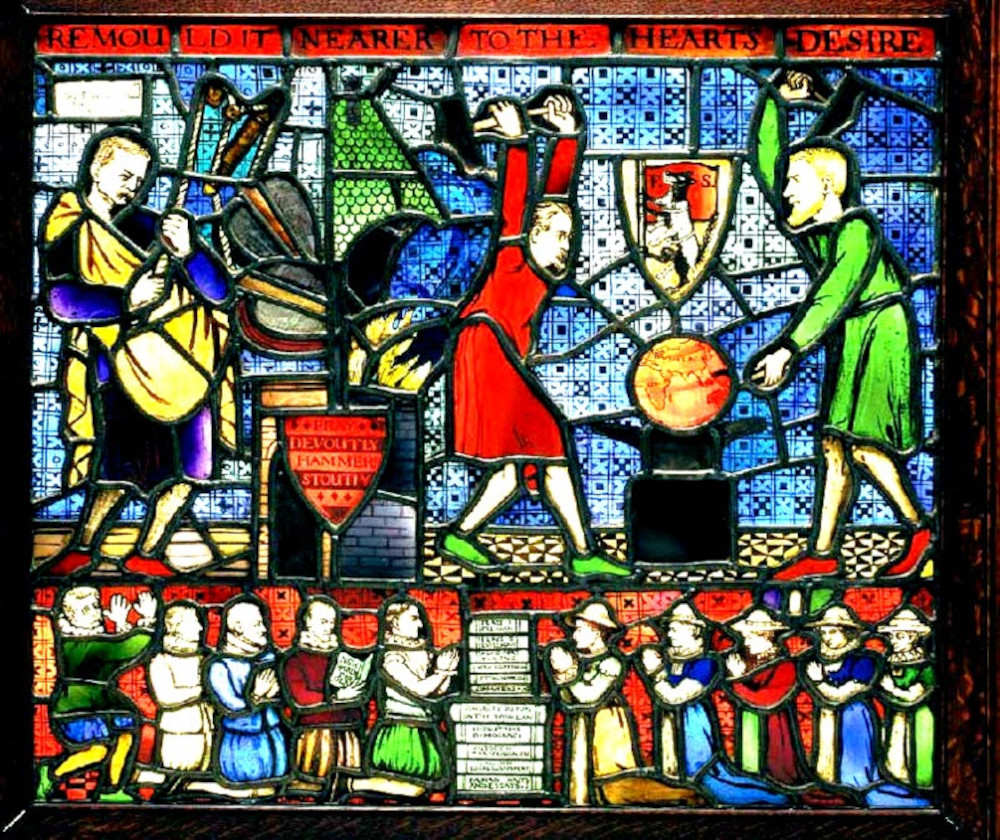
The window depicts Sidney Webb and G.B. Shaw (with hammers), Edward Pease (bellows) and other Fabians actively creating a “new world,” and says “remould it nearer to the heart's desire” i.e., the whole world is to be governed by a socialist dictatorship designed and built by the Fabians. This line is taken from a poem written by the Iranian, Omar Khayyam; you can read that here (XCIX stanza).
“Beware of false prophets, which come to you in sheep's clothing, but inwardly they are ravening wolves”.
And note those people at the bottom praying and worshipping a pile of books, which advocate the theories of socialism. Notice the wolf in a sheepskin and the F.S., which stands for Fabian Society. Here is a clearer image of it:
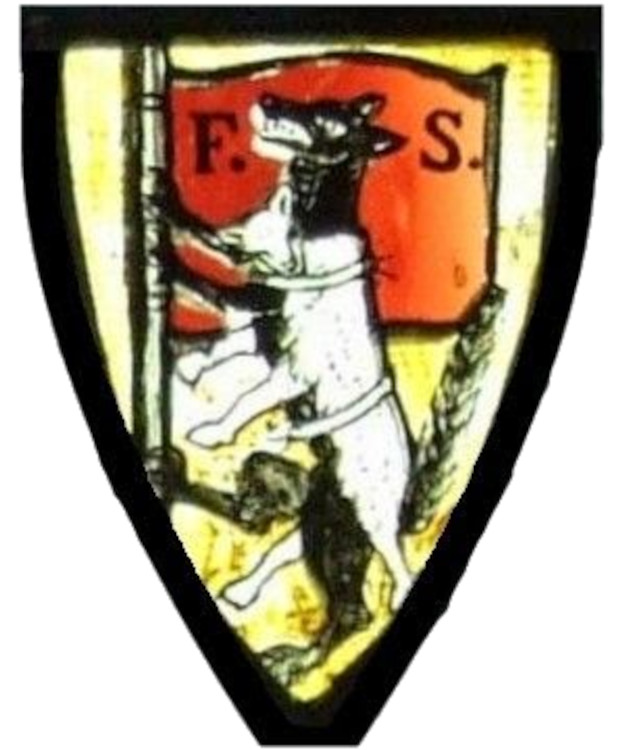
"Aggressive mimicry is a form of mimicry in which predators, parasites, or parasitoids share similar signals, using a harmless model, allowing them to avoid being correctly identified by their prey or host. Zoologists have repeatedly compared this strategy to a wolf in sheep's clothing.".
The symbol of the Fabian Society is the tortoise, which represents the gradual but steady expansion of socialism and the kind of action taken when the moment is “right”:
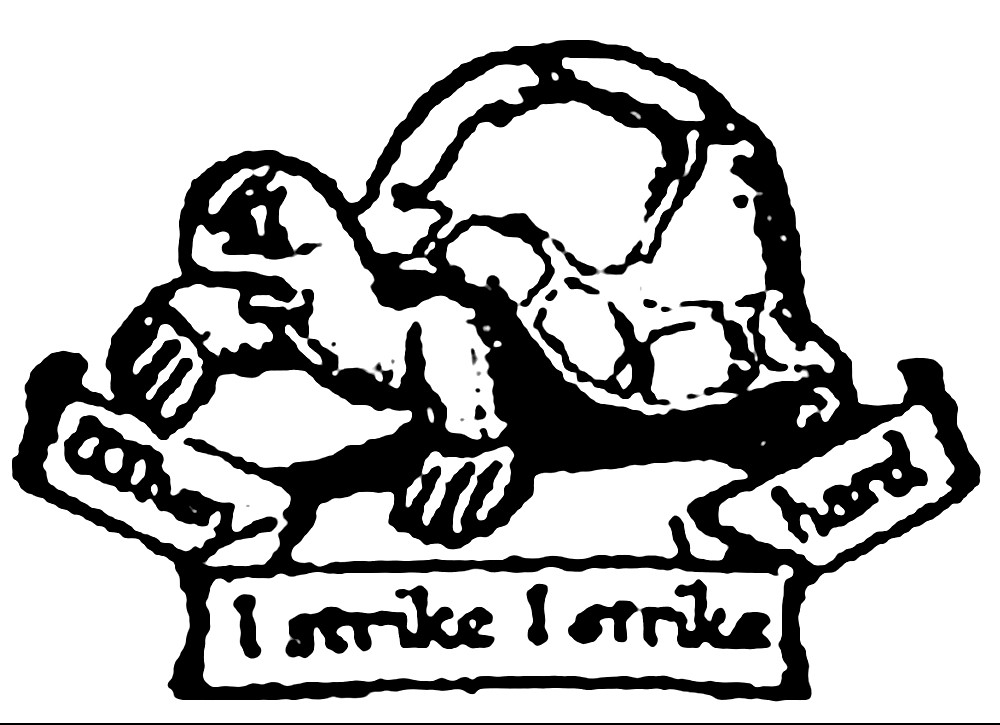
Fabian Growth and Internationalism
On 25th January 1884, Fabian J.G. Stapleton read a paper, Social Conditions in England with a View to Social Reconstruction or Development, which was the first lecture of many to come. In April 1884, the first pamphlet was distributed, entitled Why Are We Poor? By 1886 there were four leading figures of the Fabian Society, dubbed the “Big Four”: G. B. Shaw, Graham Wallas, Sidney Webb, and Sidney Oliver.
By 1889, 6500 tracts had been distributed, and 721 lectures had been given by 31 speakers. Between 1891 and 1892 one hundred and seventeen Fabians delivered 3,339 lectures and membership had grown to 400. At this time, the Fabian Society became associated with the Second Socialist International (est. 1889) and helped set up a Democratic Socialist State in Great Britain.
Over the next few years, more people joined: there were 681 members in 1894 and 881 in 1899. By this time, there were chapters set up in Canada, Australia, New Zealand, India, South Africa, Spain, Denmark, and Germany. In 1899, the most noted work on Fabian Socialism, Fabian Essays in Socialism, was produced by seven Fabian members and became the blueprint for socialist legislation. It sold hundreds of thousands of copies, was reprinted several times and translated into numerous languages. You can read it here. Another book written and edited by nine second generation Fabians, titled New Fabian Essays, was published in 1952.
H.G. Wells: Fabianism, World Government, and the New Republicans
Prior to becoming a member of the Fabian Society, H.G. Wells had written Anticipations: Of the Reaction of Mechanical and Scientific Progress upon Human life and Thought (1901). Influenced by Plato's The Republic, in Anticipations, Wells details the rise of the “New Republic,” a system of world governance and scientific control. He describes its “more developed phases…as a sort of outspoken secret society with which even the prominent men of the ostensible state may be openly affiliated” and “there are no doubt elements of technical treason.” He goes on to say that the New Republicans “will constitute an informal and open freemasonry. In all sorts of ways, they will be influencing and controlling the apparatus of the ostensible governments…” (Chapter VIII).
In January 1902, the then secretary of the Fabian Society, Edward Pease, wrote to Wells to say that Sidney Webb and his wife were “pioneers of your New Republic.” In February 1903, Wells became a member of the Society and during his membership wrote several non-fiction works, stories, pamphlets, and novels, including A Modern Utopia (1905). Since the beginning of his membership, Wells was openly critical of the Fabian Society. He became increasingly disappointed with it, criticizing its lack of radical reforms and explicit propaganda, and its lip-service pandering to the middle class rather than the lower classes. In 1906, he wrote a pamphlet called the Faults of the Fabians, outlining his goals of reorganizing the Society. Of course, this was not favoured by the “inner circle” and in September 1908 Wells resigned. Wells later denounced the Fabians as “the new Machiavellians” (Dobbs, 1964).
Nevertheless, Wells continued to be a staunch advocate of socialism, and, during World War II, he wrote the first draft of what was later to become the Universal Declaration of Human Rights (1948). In 1928, he published Open Conspiracy: Blueprints for a World Revolution. In this work, he elaborated his ideas of the New Republic and ideas from his 1926 book The World of William Clissold, which detailed a seven-point program for the development of the “new human community” (you can read this here).
The New Republic would be a classless World State run by an intelligent minority that controlled everything and who “may work in alliance with all sorts of movements and people” to further its aims. He writes that the
“open conspiracy…will have become a great world movement as widespread and evident as Socialism and Communism. It will largely have taken the place of these movements. It will be more, it will be a world-religion. This large, loose, assimilatory mass of groups and societies will be definitely and obviously attempting to swallow up the entire population of the world and become the new human community” (p. 59, my emphasis)”.
In The World of William Clissold he also writes: “we can weave a world system of monetary and economic activities, while the politicians, the diplomatists, and the soldiers are still too busy with their ancient and habitual antics to realise what we are doing” (p. 621).
This “open conspiracy,” according to Wells, was “not a project to overthrow existing governments by insurrectionary attacks, but to supersede them by disregard. It does not want to destroy them or alter their forms but to make them negligible by replacing their functions” (p. 622). The New Republicans will also be selective: “What is useful to them, it will use; what is useless it will efface by its stronger reality” (p. 622, Ibid).
Fabianism, the London School of Economics, and Big Business
Part of the strategy of the Fabian Society for gaining power gradually was infiltration and replacement. It sought allies in the universities, Churches, and newspapers, trained speakers, writers, and politicians, and indoctrinated young scholars who would eventually infiltrate educational institutions, government agencies, and political parties to promote Fabian socialism. For example, Henry Hutchinson, a Derby Fabian, left a generous sum of money (£20,000) to the Society for “propaganda and other purposes,” which was “used by the Webbs, Graham Wallas and G.B. Shaw to found a research institute to provide proof positive of the collectivist ideal.”.
In 1895 the Webbs, Shaw, and Wallas set up this institute as a branch of the University of London, called the “London School of Economics and Political Science” (LSE). According to Kerry Bolton it “provides an influential means by which Big Business can foster its [Fabian Society] aims” (Kerry Bolton, Revolution from Above: Manufacturing 'Dissent' in the New World Order, Arktos, 2011, p. 102). According to the UK Fabian Society's own website, “[t]oday, the Fabian Society and the LSE continue to work closely together.”.
In relation to Big Business, the Fabian LSE has been funded by members associated with the financial assets accrued from BEIC as stated above. The major financial contributors include the Indian millionaire Ratan Tata, the Rockefeller Foundation (in 1923 it contributed $1 million and between 1929-1952 it contributed $4,105,592), the Rothschild's, Sir Julius Wernher, Carnegie United Kingdom Trust, Mrs. Ernest Elmhurst, widow of Willard Straight who was partner of J.P. Morgan, and Sir Ernest Cassel (and just recently, £1.5 million from Saif al-Islam Gaddafi).
According to Bolton, a friend of Ernest Cassel (1852-1921), Lord Haldane, said: “Our object is to make this institution a place to raise and train the bureaucracy of the future Socialist state” (Bolton, p. 102). Cassel was a major merchant banker and capitalist, and a partner of Kuhn, Loeb & Co. and Vickers Maxim Armaments. This obviously begs a particular question: why did major capitalists and international finance organizations want to train the bureaucracy for the creation of a future socialist state? Isn't socialism, in its very essence, antithetical to capitalism?
H.G. Wells explains this seeming paradox, in part, in something he wrote in 1920: “Big Business is in no means antipathetic to Communism. The larger big business grows, the more it approximates Collectivism. It is the upper road of the few instead of the lower road of the masses to Collectivism” (Russia in the Shadows, Chapter VII, 'The Envoy', 1920).
In other words, not only is Fabian Socialism different from Marxist Socialism by strategy, it is also different by source of revolutionary potential: wealthy elites (intellectual, political, economic) rather than proletarians (working classes).
Fabianism in North America
In 1905, American Fabians established the Rand School of Social Science in New York City and incorporated the Intercollegiate Socialist Society to promote “an intelligent interest in socialism among college men and women.” A founding member was American Fabian John Dewey, considered the father of progressive education, and an atheist, socialist, and evolutionist. In 1921, the Fabian Rand School changed its name to “The League for Industrial Democracy” and established a network of 125 chapters with the aim of de-Christianising America. Dewey became president of it in 1941. Dewy also co-founded the New School for Social Research (NSSR) in 1919, which is a Fabian-socialist institution that is the American equivalent to LSE. This school, funded by the Rockefeller Foundation ($208,100 between 1940 and 1944) and the Carnegie Corporation ($95,000 in 1940) among others, set up the Graduate Faculty on Political and Social Science in 1933, called the “University in Exile,” and aimed to “accommodate the large number of socialist intellectuals” who fled or were expelled from Hitler's Germany (Bolton, p. 112-113).
In Canada, the League for Social Reconstruction was set up in 1932, which was a socialist organization associated with Fabianism and worked closely with the Co-operative Commonwealth Federation (CCF). The CCF and the New Democrat Party wanted a counter-part to the UK-based Fabian Society and in 1971 the Douglas-Coldwell Foundation was established, with Tommy Douglas as founding president who stated the Foundation would be: “A gadfly to provoke discussion…to keep the movements on the left — whether the co-operative movement, the trade union movement or the political movement — from getting in a rut.” They are currently based in Ottawa.
Fabianism and the British Labour Party
In the late 1890s, the Fabian Society founded the Labour Representation Committee, which became the Labour Party in 1906. In 1918, the Labour Party adopted a program that implemented the ideas of Fabianism. In 1931, the New Fabian Research Bureau was formed, joining the Fabian Society in 1938. In 1940, the Colonial Bureau of the Fabian Society was established and in 1941 the Fabian International Bureau was formed to cater to international interests. In December 1942 Sir William Beveridge made promises to Britons if they accepted the outlined social reforms published in his Beveridge Report.
In 1945, thanks to this report, Fabian socialists took over the House of Commons (over half of the members of Parliament for the Labour Party were Fabians) and created the Labour government. Within a few years, British industries and services had been nationalised and were under government control. For example, in 1946 the Bank of England, which had been privately owned by shareholders since the mid-17th century, was nationalised (came under the ownership of the Fabian created Labour government) and became the central Bank of England.
Over the span of just over half a century, from the Fabian Society's inception in 1884 to 1945, when the Fabian-created Labour Party became an established British power, Fabian Society membership had swelled to 8,400 members. Currently, there are around 7000 UK Fabian Society members and, according to the UK website, “[a]round 80% of our members are also members of the Labour Party.”.
Over the last 20 years, many Labour leaders and Prime Ministers have been Fabians, such as Tony Blair (PM 1997-2007), Robin Cook (Foreign Secretary 1997-2001), David Blunkett (Home Secretary 2001-2004), Gordon Brown (PM 2007-2010), and Jack Straw (leader, House of Commons, 2006-2007). In addition, “well over 200 parliamentarians are members and the Fabian Society continues to be at the heart of the Labour movement.”.
The UK Labour Party is now the leading advocate of the social engineering project that aims to transform the national character and ethnic identity of Great Britain. As an attempt to “rub the Right's nose in diversity,”, it has pushed for open-borders and Third World mass-immigration and mandated immigrant multiculturalism as a “right,” while simultaneously condemning and silencing British indigenous people's legitimate criticisms of these non-democratic, top-down enforced practices and policies.
PART II: THE FABIAN-FRANKFURT LINK, AND BIG BUSINESS
Karl Korsch: Practical Socialism and Revolutionary Marxism
In the early 1900s Karl Korsch (1886-1961), best known for his influential role in the development of cultural Marxism, was originally a member of the Fabian Society. He was born August 15th 1886 in Tostedt near Hamburg into a middle-class family — his father was a bank manager. He studied philosophy, law, economics, and sociology in Jena, Munich, Berlin, and Geneva, receiving a doctor of jurisprudence at the University of Jena in 1911. In 1912, he joined the SPD (the German Social Democratic Party) and also went to London to work with Sir Ernest Shuster, a professor of law, who wanted someone to edit and translate into German a book he had written on English civil law and procedure.
While he only stayed in England for three years, Korsch joined the Fabian Society while there. He was attracted to their emphasis on the “values of ideas” and “will” and “humanity” as this “counterpoised to the lifeless, dry-as-dust economics of Marxism.” 1 In addition, Korsch liked their “concrete, practical engagement” reflected in their attempt to construct “a finished plan for the socialisation of the economy.” 2 Most of his early writing reflects the influence of Fabianism on his thinking, such as his The Fabian Society (1912), which praised and professed admiration for them.
In 1914, he returned to Germany and increasingly turned towards Marxism. In 1919, he broke with the SPD and joined the USPD — the German Independent Socialist Party, which was the most important section of the Second International at that time. Also in 1919 the University of Jena offered him a professorship in Public and Labour Law, a position he held until 1923, and became the assistant of the socialist professor Robert Wilbrandt on the Socialisation Commission for Coal Mining (Berlin). During his assistantship he developed “his own 'Programme for Practical Socialism'” and published a pamphlet What is Socialisation?, hoping that these, “like the information pamphlets of the Fabian Society, would give the 'mentally gifted' a correct understanding of the essence of socialism and encourage them to join in helping to realise concrete socialist plans.”3
In October 1923, he became Communist Minister of Justice in the Thuringian government and a leading member of the Communist Party. In 1922, he attended a Marxist “work week” in Ilemenau, Thuringia, which was funded by the young Felix Weil, who was son of international grain speculator Hermann Weil, member of the Frankfurt Soldiers' and Workers' Council, and previous student of Wilbrandt (1919). Participants in this week-long seminar included “Georg Lukács, Weil's close friend Friedrich Pollock (an economist), Karl August Wittfogel (a member of the German Communist Party), and Richard Sorge (later to gain fame as a Russian spy in the Far East).” 4 This meeting of minds, which was “devoted to a discussion of Korsch's yet unpublished manuscript 'Marxism and Philosophy',” became the organisational groundwork for the creation of the Frankfurt School.5
Marxism and Philosophy was published in 1923. In this work Korsch defended revolutionary Marxism and criticised Second International socialism for its “degeneration” and inferiority to “Marx's socialism;” for Korsch, this form of socialism had become reformist rather than revolutionary, theoretical rather than practical, and accepting of the capitalist state.6 He considered Marxism as anti-bourgeois philosophy in respect to Marx's statement in his Theses on Feuerbach: “Philosophers have hitherto only interpreted the world in various ways; the point is to change it.” Korsch thought that the leading Socialists of the day had ignored philosophy and separated scientific socialism off from the wider political and class-based struggles associated with original revolutionary Marxism. Surmising that Marxism is a form of revolutionary action that unites theory and practice via practical human action, or praxis, he attempted to “reconstruct the revolutionary, active side of Marxism, as exemplified in the Bolshevik Revolution [1917].” With his emphasis on practical socialism, he stood in “opposition to both the 'orthodox' and the 'revisionist' wings of the Marxism of the Second International.”.
When Marxism and Philosophy was published, it was quite evident that Korsch was beginning to differ from Fabian-style socialism and Marxist revisionism. However, both G.B. Shaw and the Webbs also advocated practical socialism as reflected by Bolshevism, and they were supportive of the later nationalistic socialism put forward by Stalin in 1924 in the pamphlet Socialism in One Country.7 Shaw said, “Stalin is a good Fabian”8 and the Webbs wrote Soviet Communism: A New Civilization? (1935). However, between 1934 and 1940 Stalin initiated what was to become known as the Great Purge or the Great Terror, and these leading Fabians still supported this, seemingly contradicting their emphasis on non-violent gradual reformism.
The estimated number of unnatural deaths during the Russian Civil Wars of 1917-1923 stands between 6 and 9 million; the estimated average number of unnatural deaths during the Stalin regime (1924-53) stands at around 30 million.
In the early 1920s the Bolshevism that Korsch liked was revolutionary, proletarian, and purely anti-capitalist, but the Bolshevism that the Webbs and Shaw liked was go-slow, elitist, and in cooperation with capitalists: it was a "state-capitalist, or state-socialist, form of capital production.”.
Korsch eventually argued not just against capitalism and the reformism, revisionism, and Orthodoxy of the Second and Third Internationals, but also against Bolshevism. He was convinced that the latter was a regime of “false consciousness” that “exploited” the “international radical labour movement” and thus was not beneficial to proletarian communism.
Korsch's new ideas and dissent eventually led to his expulsion from the Communist Party in 1926. By the late 1920s, Korsch completely broke with Bolshevism, stating that “its content and function [had] become a seemingly classless but in reality bourgeois and anti-proletarian state ideology.” 9
Founding Members of The Institute for Social Research, a.k.a. The Frankfurt School
As stated above, the Weil-funded Marxist seminar in 1922 was centred on Korsch's yet-to-be published Marxism and Philosophy and eventually led to the formation of the Frankfurt School. Initially, Korsch had a large influence, in terms of his emphasis on praxis — practical political activism — and in terms of introducing the 'gradualism' of Fabianism: “Korsch had been discussing the idea of founding a Marxist discussion and research institute modelled on the Fabian Society.” 10
The Frankfurt School started out as the Institute for Social Research, which was officially created on February 3rd 1923 by members of the German Communist Party at Frankfurt University, and funded by Felix Weil's father, who provided “a yearly income of 120,000 Marks.” 11 It officially opened on June 22, 1924, was co-chaired by Felix and his father Hermann, and directed (3rd Feb 1923) by Carl Grϋnberg (1861-1940), after the future-appointed first director (1922), Fabian member Kurt Albert Gerlach, died at the age of 36 from diabetes before he could take up the position. Nevertheless, Gerlach left his 8000 volume library to Felix Weil, who then passed it on to the Institute.
Frankfurt School Cultural Marxism
The early beginnings of the Frankfurt School emphasized the reformulation of Marxism. The Marxist proletariat revolution was not going according to plan, as signified by World War I (the working classes, rather than aligning with their class, gave preference to their nations and fought each other), and by the socialist regimes under Lenin, Trotsky, and Stalin in Russia spawned by the 1917 Bolshevik revolution. Marxist intellectuals gathered in the Weimar Republic to discuss why the revolution had not taken place in Europe, and returned to the drawing board to perform a “searching re-examination of the very foundations of Marxist theory with the dual hope of explaining past errors and preparing for future action.” The Frankfurt School was explicitly created to do this research and planning “to become a major force in the revitalization of Western European Marxism in the postwar years.” 12
As they reworked Marxist theories, they developed a new strain of Marxism that gave priority to the radical transformation of the cultural superstructure (foundations) of Western civilization. They perceived Christianity and Western cultural traditions as obstacles to the revolution, which needed to be severed at their roots. This Marxist ideology came to be called cultural Marxism, a non-violent but revolutionary collectivist ideology that seeks the gradual gain of power via the modification of laws, institutions, and social organizations.
Other than Korsch, there were three European Marxist theorists who had a significant impact on Frankfurt School cultural Marxism: in the initial founding stages, Georg Lukács (1885-1971), and in the later stages, Antonio Gramsci (1891-1937) and Herbert Marcuse (1898-1979), whose writings were particularly influential in the 1960s, especially on the British-created Centre for Contemporary Cultural Studies, or the Birmingham School (1964) and the counter-culture movement and the New Left.
Georg Lukács
Lukács was born in Hungary to one of Hapsburg Empire's leading bankers, József Löwinger. In the year after the Hungarian revolution (1918) he became Deputy Commissar for education and culture for the short-lived (just over 4 months) Bela Kun Bolshevik regime in Budapest, Hungary. During this position Lukács argued for the necessity of terror and was involved in what is called the Red Terror, named after the Red Terror in Soviet Russia, which involved mass-murder, torture, and oppression. A pack of about 200 young men, the “Lenin Boys,” sought and killed counter-revolutionaries and dissidents in Hungary at this time. Disappointed with the way the revolution had developed — it was a disaster — Lukács asked “Who will save us from Western civilization?”.
While he was Deputy Commissar, Lukács sought to destroy society along with the traditional values of the West, writing: “I saw the revolutionary destruction of society as the one and only solution,” and: “A worldwide overturning of values cannot take place without the annihilation of the old values and the creation of new ones by the revolutionaries.” His methods became known as cultural terrorism. 13 One of these methods to undermine traditional Western culture was the introduction of a radical sex education program; “special lectures and supportive literature were developed to instruct Hungarian children” about free love and sexual intercourse, to repudiate middle-class family codes of monogamy, and “to deride and ignore the authority of parental authority, and precepts of traditional morality.” 14 In addition, the promiscuity, and rebellion of women against patriarchy was promoted.
Lukács participated in the 1922 Marxist workweek in Thuringia, and thus helped found the Frankfurt School. In 1923, he published History and Class Consciousness, the same year that Korsch published his Marxism and Philosophy. Lukács argued that the Christian cultural institutions of the West were oppressive, intolerant, and had “blinded” people “to their true class interests” (Bill Lind, The Origins of Political Correctness). He wanted to destroy the cultural institutions of the West so that power would “fall into their laps like ripened fruit” and the Communist state could be created.15
Lukács also influenced the Frankfurt School development of Critical Theory.
Critical Theory: Max Horkheimer and Theodor Adorno
Critical Theory was largely developed by the writings of Max Horkheimer (1895-1973) and Theodor Adorno (1903-1969) in the 1930s and early 1940s, culminating in their jointly written book, Dialectic of Enlightenment (1944). Critical Theory is a dialectical method of critical analysis of the existing order of the West. Raymond V. Raehn defines Critical Theory as “essentially destructive criticism of the main elements of Western culture, including Christianity, capitalism, authority, the family, patriarchy, hierarchy, morality, tradition, sexual restraint, loyalty, patriotism, nationalism, heredity, ethnocentrism, convention, and conservatism” (Raymond Raehn, The Historical Roots of Political Correctness). These organizations were to be changed: “captured…converted” and “politicized” into agents of revolution by a slow and gradual infiltration.16
Horkheimer, son of a wealthy textile businessman, became director of the Frankfurt School in 1930 and, like the Fabians and many other European Marxists, wanted “a subtle revolution” that would be undertaken by “the penetration and transformation of the cultural traditions and institutions of Western Civilization.” 17 However, following Hitler's rise to power (1933), many of the Frankfurt School members left Germany and immigrated to the USA. In 1934, Columbia University helped these “political refugees” set up a version of the Frankfurt School based in New York City, called the Institute for Social Research. During this time, an Emergency Program for European Scholars and “the University in Exile,” were established and funded by the Rockefeller Foundation, and intended to bring these Marxist scholars to the USA. These intellectuals began careers in America that impacted the 1960s counter-culture movements and eventually laid the groundwork for the social and psychological sciences that dominate Western academia today.
Adorno, son of a successful German wine merchant, was an influential thinker of the Frankfurt School, becoming its director in 1958. He left for New York in 1938, getting teaching positions at Princeton and Berkeley, and in 1950 he published a major work, The Authoritarian Personality. Writing the preface of this work, Horkheimer states: “This is a book about social discrimination” and “the position of minorities in modern society, and more specifically the problem of religious and racial hatreds” associated with “the authoritarian type of man,” a complicated personality syndrome that can be measured according to an “F Scale” (F stands for fascism). 18
Focusing on conservative rather than leftist authoritarianism, in this work Adorno argued that the traditional family is the “seedbed of fascism” and there is an “inherent authoritarianism of the father-figure.” 19 Raehn writes that it “was premised on one basic idea,” namely that “a society of Christianity, capitalism and the patriarchal-authoritarian family created a character prone to racial prejudice and German fascism” (Raehn, Political Correctness). Here are a few quotes from it:
“It is a well-known hypothesis that susceptibility to fascism is most characteristically a middle-class phenomenon, that it is 'in the culture' and, hence, that those who conform the most to this culture will be the most prejudiced”.
“…conformity works against the values of cultural diversity”.
“The power relationship between the parents, the domination of the subject's family by the father or by the mother, and their relative dominance in specific areas of life also seemed of importance for our problem”.
“It would then be more understandable why the German family, with its long history of authoritarian, threatening father figures, could become susceptible to a fascist ideology”.
“A tendency to transmit mainly a set of conventional rules and customs, may be considered as interfering with the development of a clear-cut personal identity in the growing child”.
“Another aspect of traditionalism is the tendency to oppose innovations or alterations of existing politic‑economic form”.
Antonio Gramsci
Another European Marxist theorist that came to influence the development of Critical Theory and cultural Marxism was the Italian, Antonio Gramsci. Like the Frankfurt School theorists, he thought that in order to overthrow capitalism the cultural institutions of the West, the roots, had to be severed. Between 1929 and 1935, while in prison, he outlined a plan for a future revolution involving cultural changes from within, now well-known in The Prison Notebooks. Although he died in 1937 his writings did not become published until the 1950s. These writings contain his theory of cultural hegemony (cultural dominance by the ruling class), and two methods for a counter-hegemonic force to eventually gain power: “war of position” and “war of movement.”.
According to Richard Howson, the “war of position” is the “struggle for emancipation” of the subordinated and marginalised classes and “enables the opposition forces to break down the dominating groups socio-cultural influence and, simultaneously, works to disperse their military strength, giving the opposition the spatial and temporal conditions to develop a collective consciousness and a determined will to construct and employ their own strike force” (my emphasis).20 Gramsci's strategy of “war of position” is one of gradual infiltration, like Fabian “permeation” and “honeycombing;” it is, in the 1968 interpretation by Rudi Dutschke, “a long march through the institutions.” 21 Dutschke (1940-1979) was the leading spokesperson for the German student movement of the 1960s and was inspired by Gramsci and the Frankfurt School.
Herbert Marcuse
In America, the leading spokesman (“guru”) for the counter-culture movement, the most influential and supportive figure associated with American political activism and the New Left, was Frankfurt theorist, Herbert Marcuse (1898-1979). Marcuse was born in Berlin into an upper-middle class family. He joined the Social Democratic Party while a student and received his PhD in 1922 from the University of Freiburg. He helped co-found the Frankfurt School and then moved to the US in 1934. During World War II he worked with the government on anti-Nazi propaganda, and after the war he taught at a series of Universities: Columbia, Harvard, Brandeis, and the University of California.
The student rebellion and the resistance to the draft and the Vietnam War provided the conditions for Marcuse to promote his work and that of the Frankfurt School. Two of his books, Eros and Civilization: A Philosophical Inquiry Into Freud (1955) and One Dimensional Man: Studies in the Ideology of Advanced Industrial Society (1964) influenced the Students for a Democratic Society (SDS), the student movement as a whole, and the sexual revolution. Along with another member of the Frankfurt School, Erich Fromm (1900-1980, who wrote about the “social construction” of sex differences), Marcuse synthesized Freudian psychoanalytical theories of sexual repression and Marxian theory.
In Eros and Civilization (1955) Marcuse advocated the idea of “Polymorphous Perversity” (natural sexual libido of infants to age five), a notion that emphasised sexual liberation from socially normative sexual behaviors via an infantile and primitive Pleasure Principle. In line with Fromm and others, he promoted free love and thought that “sexual repression” is a product of capitalist society and that “sexual liberation” would precede a social revolution. This “sexual revolution would require the destruction of traditional concepts of family, parenthood, and child-rearing.” 22 To him, gender, sex, marriage, and the family were merely social constructs that needed to be deconstructed for liberation to occur.
In One Dimensional Man (1964) Marcuse argued that new forms of social control — mass media, advertising, and industrial management — had stifled the negation of oppositional activity, creating a one-dimensional universe empty of critical thought and revolutionary potential. People, who had formerly been of revolutionary potential, were now, in mass-consumer society, “assimilated,” but this did not indicate “the disappearance of classes, but the extent to which the needs and satisfactions that serve the preservation of the Establishment are shared by the underlying population.” 23 He added: “Under the conditions of a rising standard of living, non-conformity with the system itself appears to be socially useless.” 24
In other words, the working classes were no longer a viable source for revolutionary socialism. Marcuse still sought radical social change and looked for new sources of revolutionary force to accomplish it. According to Douglas Kellner, a third generation Critical Theorist, Marcuse “reflect[ed] upon the potential for liberation in Third World revolutionary movements, the possibilities of solidarity between those organisations and racial forces in the highly industrialised countries, and the potential for emancipatory social transformation in the New Left, student anti-war movement, feminism, black power, and other social forces of the era.” 25
These new sources of radical social change were also found in the waves of immigrants from the onset of non-European mass-immigration and the growth of ethnic immigrant communities, as well as in the wake of the Civil Rights Act (1964) and the Sexual Revolution. Marcuse claimed opposition movements had the “right” to stake moral and political demands against Western orthodoxy in their bid for “natural liberation” and emphasized their marginalisation, oppression, and victimhood as central to their solidarity.
Cultural Marxist Tactics since the Sixties
The “permeation” strategies of Fabian socialism and the “long march” of the Critical Theory of the Frankfurt School has been manifested in numerous cultural and political developments and reforms since the 1960s, including: Feminism, Affirmative Action, Deconstruction (Derrida, 1967), the transformation of the Family, Church, Education, and Morals (transvaluation), Third-World Opposition movements, Anti-Nationalism, Cultural Contempt, Anti-Discrimination and Immigration reforms, White Privilege, White Guilt, Diversity, Tolerance, Political Correctness, and Multiculturalism.
In the early 1970s the New Left splintered into separate groups, seeing Critical Theorists entering the media and educational institutions and promoting anti-authoritarianism, anti-establishment, and the destruction and remaking of Western culture. Cultural Marxists use a culturally pessimistic tactic that involves repeating over and over that Western societies “are the greatest repositories of racism, sexism, nativism, xenophobia, homophobia, anti-Semitism, fascism, and Nazism,” all due to its traditional Christian traditions.26 This is a tactic that is similar, if not directly taken from, the Communist Directive of the Moscow Central Committee of 1943:
“When certain obstructionists (to communism) become too irritating, label them, after suitable build-ups, as fascist or Nazi […] and use the prestige of anti-fascist and tolerance organisations to discredit them. Members and front organizations must continually embarrass, discredit and degrade our critics. Accuse them of being traitors to the war effort, fascists, Red-baiters, peace-destroyers, Quislings, labour traitors… The association will, after enough repetition, become “fact” in the public mind”. 27
Another strategy that is employed is the labelling of the opposition as mentally ill and/or in need of psychological reconditioning. Programs such a sensitivity and diversity training [see here, and here, and here, and here] are designed to instil “correct attitudes,” which is the replacement of old values with new ones.
Still another tactic, particularly today under the rubric of “tolerance” and “political correctness,” is the complete intolerance and punishment of any resistance to multiculturalism and mass-immigration. Some of the methods used are dehumanisation, demonization, stigmatisation, job loss, and even arrest of members of the opposition, which are nefariously justified by touting words such as racist, supremacist, Nazi, ethnocentric, and right-wing extremist.
Elitist Socialist-Capitalist Syntheses
Not only is Fabian and Frankfurt School socialism different from Marxist socialism by explicit strategy (gradualism versus violent revolution), this socialism is also different by source of revolutionary potential: Fabians focus on the elites, and cultural Marxists on subalterns, rather than the proletarians (working classes). Bolshevism, Fabianism, and cultural Marxism can be considered as elite forms of socialism, whether in intellectual, political, cultural, or economic terms. As they no longer focus on the working classes, they are bourgeois revolutionary theories rather than a proletarian revolutionary movement. They are revolutions from above, not below; they are not grassroots or democratic; they are plutocratic, oligarchic, and dictatorial. These socialist intellectuals “march through the institutions” to effect a “gradual” revolution from above and are sponsored by the capitalist forces they supposedly oppose. According to Bolton,
“the “[s]trategy of international oligarchy is dialectics: the conflict of opposing forces that generates a synthesis. This dialectical method … [explains] why the oligarchy so often seems to be backing opposite ideologies, governments, and policies” and “The oligarchs…apparently operate on the dialectical premise that what will result from their 'controlled conflict' will be a socialist-capitalist synthesis which we might call the 'World Collectivist State'; a world order that will be communistic in organisation but run by oligarchs rather than commissars”. 28
Another way of looking at this is “Third Way” economics, such as advocated by Fabian PMs Tony Blair and Gordon Brown, and the UK Fabian Labour government. This is an attempt to reconcile left and right-wing politics through a synthesis of right-wing economic policies, i.e., capitalism and left-wing social policies, i.e., socialism.
Multiculturalism and World Governance
The “permeation” and “long march” of Fabianism and cultural Marxism continues today in the policies of multiculturalism and mass-immigration. For example, a prominent Canadian intellectual and Queen's University scholar of multiculturalism, William Kymlicka, writes that “there was a deep institutional embedding of multiculturalism” in Canada.29
Multiculturalism, initiated in the federal statement of multiculturalism in 1971 by PM Pierre Trudeau, was gradually implemented, step-by-step, in what Kymlicka and his colleague Keith Banting explicitly refer to (without citing) as part of the “long march through the institutions at all levels of Canadian society” (my emphasis).30
In fact, according to Hugh Donald Forbes, political economy professor at the University of Toronto, Pierre Trudeau considered multiculturalism “a big political experiment” that had as its “aim” the testing and refinement of “a theory of how to overcome national or ethnic conflict.” This experiment involved the mixing of:
“the populations of existing states even further, with a view to ultimately separating state and nation altogether, thus undermining the psychological basis for an intense and exclusive state patriotism and preparing the way for the necessary transition to a world of semi-sovereign states (or provinces) under some form of global governance”.
Fabian socialism and Frankfurt School cultural Marxism employ “gradualism” and “long march” permeation strategies to undermine and transform traditional Western societies. The last fifty years have witnessed elitist socialist governments coming into power that enforce a top-down reformism and global governance in alliance with Big Business. They have disregarded the white working classes as the revolutionary source for the manifestation of their goals, favouring instead “minority” opposition movements and Third-World immigrants. Today they favour two specific methods to radically alter Western civilization: the practice of mass-immigration and the policies of multiculturalism in unison with the economic interests of business elites.
PART III: FABIANISM, BIG BUSINESS, AND THE CULTURAL MARXIST-INITIATED IMMIGRATION AND MULTICULTURALISM PROGRAM IN WESTERN NATIONS
Growth of Immigrant Communities and Indigenous Opposition
Prior to World War II, Western countries were overwhelmingly white in ethnicity and immigration was mainly intra-Western. In the 1950s and 60s, European-based countries began to practice non-European mass-immigration. In the 1970s, all European-based countries enacted a version of multiculturalism, whether in the form of “diversity,” “integration,” “melting pot,” or “mosaic” models. By the 1980s, non-European ethnic immigrant communities were growing steadily in all Western nations, thanks to the high birth rates of non-European immigrants and the introduction of family reunification laws. Today, some key areas, particularly around the major cities, have become majority non-White. Some of these ethnic minority neighbourhoods are parallel communities known as anti-Western no-go zones, sensitive urban areas, under self-governance e.g., Sharia-controlled areas, often claimed by ethnically distinct youth as territory captured.
Since the 1990s, and even earlier, polarized populations along ethnic lines have arisen and urban youth violence in all the major cities of Europe has escalated. Increasing public criticism of mass-immigration has accompanied these developments, as seen in polls, surveys, and government reports, see here, and here, and here, and here.
Numerous anti-immigration parties have emerged all across the Western world and, in recent years, several European political leaders have claimed that multiculturalism has failed completely or is dead. There have also been growing debates about European countries suffering from an “identity crisis,” “end of Europe,” “White genocide,” and the creation of “Eurabia.” Nevertheless, all major political parties in the West do not acknowledge these public grievances other than in terms of lip service, or by negative labelling of criticism and opposition political groups as “racist” or “extremist.
Mainstream Justifications for Sustained Large-Scale Non-European Immigration
Not one single mainstream political party has provided adequate representation for the indigenous majorities of Western countries; not one has stood up for the white working classes or white ethnic identity; not one of them has commented on the devastating changes (cultural, economic, political, national, demographic) these social engineering practices have wreaked upon the European peoples and way of life. Instead, through the years, numerous reasons have been given in an attempt to justify sustained high-level immigration, which can be broken into two main time-periods:
- Beginning in the 1950s Third-world mass-immigration was said to be necessary due to the shortage of labour power post-WWII, which also coincided with decolonization and the U.S. Atlantic Charter vision of international free trade
- From the 1980s onwards, mass-immigration from the Third-World has been justified in numerous ways (and despite economic recessions and high unemployment)
- Offsetting the lack of skilled workers available
- Countering low fertility rates or depopulation
- 'Diversity is strength', 'unity in diversity', 'cultural enrichment
- An experiment to end ethnic conflict in the world
- Humanitarian responsibilities: family reunification and refugee intake
- Widening the tax base to sustain social services: welfare, healthcare, pensions, and other services
- Offsetting native's aversion to certain low-skilled jobs
- Economic innovation and the creation of jobs
- Net financial benefits to host countries
Other than the “cultural enrichment” and “end of ethnic conflict” aspects, all of these reasons are centred on one pivotal factor: economics.
Fabian-based Documents and Justifications
One of the main reasons given for initial postwar mass-immigration from the Third World was the need for an economic boom coupled with a shortage of cheap European labour power after WWII. European countries had been devastated by both Wars and needed a supply of cheap labour to begin the reconstruction process. As this was also a time when Western colonial powers were providing independence for countries in Asia and Africa, as well as in the West Indies, much of the labour power came from these areas. For example, the United Kingdom enacted the British Nationality Act in 1948, which guaranteed the “right of entry” to the Commonwealth citizens of their former colonies (West Indies, Pakistan, and India) and recruited them as a labour force, allowing them to settle and work in the various industries in Britain.
Immigration into the West before WWII had been mainly based on “white-only” immigrant selection criteria. But during and after the WWII, some important documents signalled a new direction in international relations leading to important changes in immigration practices, namely, the Atlantic Charter (a U.S - U.K alliance created on August 14, 1941), the Declaration of the United Nations (1942), and the Universal Declaration of Human Rights (1948).
After World War II, the United States grew in power and President Franklin D. Roosevelt developed a Fabian-influenced Wilsonian vision of the postwar era that stressed international free trade, national sovereignty, and shared security. Woodrow Wilson was a fan of Fabian socialism and Roosevelt himself was well-connected to the Fabian Society: his wife Eleanor, his friend H.G. Wells, and his economic adviser Stuart Chase, who authored A New Deal (1932), were Fabians.
In point 4 of the Atlantic Charter it states that Britain and the U.S. would “endeavour, with due respect for their existing obligations, to further the enjoyment by all States, great or small, victor or vanquished, of access, on equal terms, to the trade and to the raw materials of the world which are needed for their economic prosperity.” For Roosevelt the “equality of peoples” was a necessary element for his plan of international free trade to materialise: “The structure of the peace demands and will get equality of peoples. Equality of peoples involves the utmost freedom of competitive trade” (Elliott Roosevelt, As He Saw It, 1946, p. 35).
This Charter also included the dismantling of the old-world imperialist system and Empire, as well as world-wide reduction in armaments, for the purpose of creating world peace (as set out by the League of Nations post WWI), but in actuality it was American-led neocolonialism masquerading as free trade. At a dinner in August 1941, British Prime Minister Winston Churchill responded to this plan: “Mr. President, I believe you are trying to do away with the British Empire. Every idea you entertain about the structure of the postwar world demonstrates it” (Sidney Lens, The Forging of the American Empire. From the Revolution to Vietnam: A History of U.S. Imperialism, 1971, p. 327).
Regardless of this critical stance, Churchill signed the Charter. He was also inspired by Fabianism, accepting the 1942 Beveridge report of the UK Fabian-Labour Party led by Fabian PM Clement Attlee. He considered Stalin his friend, and like the Webbs and G.B. Shaw, called him “Uncle Joe”.
In 1942, a short document which came to be known as the “United Nations Declaration” was signed by 26 nations which had pledged to uphold the Atlantic Charter. Then in 1945 the United Nations Conference on International Organization resulted in the creation of the United Nations Charter in 1945, which is the foundational treaty of the United Nations. However, due to atrocities committed during WWII, a clear and concise definition of the rights referred to in the UN Charter was required. Fabian member Eleanor Roosevelt chaired the Universal Declaration of Human Rights Drafting Committee, which began in 1946, and the principal drafter was the Canadian socialist, John Peters Humphrey. On 10 December 1948 the United Declaration of Human Rights (UDHR) was adopted by the United Nations General Assembly as the first global expression of abstract human rights and the inherent entitlement of all human beings to these rights.
The 1941 U.S.-U.K. Atlantic Charter institutionalised a new global order that influenced the opening of Western nations to non-European immigration from the Third-World (decolonisation, equality, and independence) and shaped the development of global institutions such as the United Nations, the UDHR, the International Monetary Fund, the World Trade Organization, the World Bank and NATO. It also influenced the North Atlantic Treaty Organization, the Climate Change framework and the European Union.
With the creation of the UDHR, modifications to immigrant selection criteria were necessary so that immigration laws were consistent with Human Rights. UDHR requirements meant that the selection of immigrant flow sources was no longer based on the grounds of race, as this was considered racist. In fact, as immigration was necessary to fuel economic growth for the neocolonialist international free trade agenda of the Atlantic Charter post-WWII, and because European labour power was limited, including in non-war torn Canada and the United States, it was considered as vital that race was removed from immigration selection criteria. According to Noam Chomsky, immigration as a capitalist enterprise is inherently anti-racist: “identifications based on race interfere with the basic ideal that people should be available just as consumers and producers, interchangeable cogs who will purchase all the junk that's produced — that's their ultimate function, and any other properties they might have been kind of irrelevant, and usually a nuisance” (Chomsky, Understanding Power, 2002, p. 89).
Family Reunification, Temporary Work Permits, and the Myth of 'Guest Workers'
One consequence of the British Nationality Act (1948), mentioned above, was a dramatic increase in the amount of non-European non-economic migrants: “family reunification meant that every pre-1962 migrant would bring in two or four subsequent migrants in the form of his family members” (source). In response, the Act was overturned in 1962 and immigration controls were introduced by the conservative government under Harold Macmillan. The 1962 Commonwealth Immigrants Act aimed to control “the immigration into the United Kingdom of Commonwealth citizens” (source).
Although Labour opposition “denounced the measure as populist and racist,” there was widespread public support for such immigration restrictions. Once it ascended to power again in 1964 (to 1970), the Labour government under Harold Wilson came to understand the consequences of the British Nationality Act and in response, in 1965, it “tightened administrative controls over immigration and reduced the number of vouchers available”.
Then, in 1968, after strong campaigning by Enoch Powell and associates, Labour amended the 1962 Commonwealth Immigrants Act so that “a British subject was free from immigration control only if he, or at least one of his parents or grandparents was born, adopted, registered, or naturalised in the United Kingdom” (Ann Dummett and Andrew G. L. Nicol, Subjects, Citizens, Aliens, and Others: Nationality and Immigration Law, 1990, pp. 202-203).
By 1971 another Immigration Act was passed by the conservative government under PM Edward Heath. This act gave temporary work permits to non-European immigrants rather than employment vouchers, and exempted 'patrials' or those with close UK associations. In addition, it made provisions for assisting in the voluntary repatriation of those migrants who had come to the UK under the British Nationality Act.
As a result of the temporary work permits, in the 1970s, a great deal of non-Europeans voluntarily migrated to the UK because of good employment prospects. They were considered “guest workers,” temporary labourers who would eventually return to their home countries. For example, “[m]any South Asian workers initially intended their stays to be temporary and a means of socio-economic mobility — through higher wages and remittances — for themselves and their extended families at home,” what is now known as the “myth of return” (Christian Karner, Ethnicity and Everyday Life, 2007, p. 75). It was a myth precisely because many of these economic migrants (and those recruited but refusing repatriation) eventually settled permanently in the UK and brought over their families via family reunification laws, leading to the massive growth of Hindu, Sikh, Muslim, and Black communities that we see today.
The Largest Immigrant Group in All European Countries: Muslims
In 1951, there were less than 22,000 Muslims in the United Kingdom; by 2011 there were over 2.8 million. Like the UK, all European countries had very small Muslim populations until the postwar era. Then France turned to Algeria in the 1960s and initiated mass-Muslim immigration in a bid to stave off cheap labour shortages; Germany turned to Turkey, also initiating Muslim mass-immigration; and other European countries have done the same, turning to Muslim-majority countries for sources of cheap labour. These choices now account for why Muslims are the largest minority immigrant group in many European cities today:
Large-scale Non-European Immigration to Canada
While Canada was not devastated during World War II, it too suffered from a labour shortage and turned to non-European immigration during the 1970s. Even though places like Canada, Australia, and the United States were different than Europe due to their modern history of settlement, and the presence of indigenous peoples (and African Americans in the United States), immigrant inflows remained majority White until the 1970s, when non-White mass-immigration was initiated. Canada, for example, did not start accepting high numbers of non-European immigrants until it implemented its 1967 points system in 1976. Only 2.1% of the population in 1971 constituted non-European peoples, and remained under 5% until the mid-1980s. By the 1990s, about three quarters of all immigrants entering Canada were of non-European origin (visible minorities), and in 1996 “11.2% of Canada's population — 3.2 million people — identified themselves as members of a visible minority group” (Monica Boyd and Michael Vickers, “100 Years of Immigration in Canada”, Canadian Social Trends, No. 58, 2000, p. 9).
By 2012, the non-European population made up at least 23.8% of Canada's total population. In 2010, it was projected that in 2031 the “country's foreign-born population is…expected to rise to as much as 28 per cent” and the visible minority population would represent about one third of the nation's population (source).
The Fabian-Labour Roots behind the Rise of British Multiculturalism
Similar to Canada, which institutionalized multiculturalism as Canadian identity through Trudeau's Multiculturalism speech of 1971, along with the various, acts, policies, and mandates that have followed, multicultural policies in the UK were adopted by local administrations from the 1970s and 1980s onward (although the term was never defined). British multiculturalism was first advocated by Roy Jenkins (1920-2003) in 1966. At this time, the conditions in Britain were ripe for an ideology to arise as some sort of companion-piece to the practice of immigration and a guideline for the settlement of non-Europeans in the UK.
Jenkins was the son of a Welsh trade unionist and Labour Party politician, and in 1948 was elected into the House of Commons. He was a Fabian socialist, publishing his essay, “Equality” in the New Fabian Essays (1952). In December 1965, he was made Labour Home Secretary of the State, and in May 1966, he gave a speech in London to the National Committee for Commonwealth Immigrants, outlining his concept of multiculturalism:
“I do not regard [integration] as meaning the loss, by immigrants, of their own national characteristics and culture. I do not think that we need in this country a “melting pot,” which will turn everybody out in a common mould, as one of a series of carbon copies of someone's misplaced vision of the stereotyped Englishman…I define integration, therefore, not as a flattening process of assimilation but as equal opportunity, accompanied by cultural diversity, in an atmosphere of mutual tolerance”.
This multicultural socialist egalitarianism wasn't nationalised in the UK until 1997 under the New Labour government.
Demographic Justifications
The labour shortage argument for mass-immigration from the Third-World into the West dwindled away and was replaced by other arguments. In addition to the well-known claims about the cultural benefits of such slogans as “unity in diversity,” “diversity is strength,” and “cultural enrichment,” most arguments that support mass-immigration are heavily centred on economics and demographics.
Although there was a postwar baby boom, fertility rates in Western countries over the last sixty years have seen a dramatic decline. Today, fertility rates are below replacement levels. For example, “[i]n 2000, Canada's total fertility rate was 1.49 children for every woman, the lowest on record. Fertility in Canada was near the levels of European countries (1.4), but lower than the level observed in the United-States (2.1)” (source).
This low-fertility and hence demographic decline is used by immigration advocates, claiming that continued and even increased immigration into Western nations is necessary. In addition, the concept of ageism (baby boomers retiring en-masse) is integral to the demographic decline argument. The argument runs like this: An ageing labour force and the retirement of baby boomers means the labour force is shrinking and this will put a devastating strain on government financial programs such as welfare, pensions, and healthcare. In order to counter this trend, continued mass-immigration is necessary. Immigrants (and their generally high fertility rates) are the means of population growth and will provide the necessary taxes and a continuous supply of labour to sustain social services and keep the welfare system in motion.
However, as we all know, immigrants also age. In addition, many non-European immigrants are not skilled and are dependents, i.e., are not of working age (children and the elderly), so do not contribute to the tax base. For example, in Canada, otherwise known in the rest of the world as a model of “skilled labour immigration,” we find that “[l]ess than 20% of the immigrants…are selected because of their skills and training,” which means that only about 50,000 out of the 250,000 immigrants accepted into Canada per year, are skilled workers (James Bissett, “The Current State of Canadian Immigration Policy", in The Effects of Mass Immigration on Canadian Living Standards and Society, edited by Herbert Grubel, 2009, p. 3). In fact, a total of 58.3% of the total immigration intake are not contributing to the tax pool as they are children, housewives, parents, grandparents, and the disabled, and often use social services paid for by taxpayers (Alan Simmons, Immigration and Canada: Global and Transnational Perspectives, 2010, pp. 93-94).
Financial Benefits Justification
A further economic argument supporting mass-immigration is the supposed net financial benefits. But what strata of the native population receive this financial benefit? Statistics have shown that immigration is causing a financial drain on the economy of Western nations and those who are actually financially benefiting from mass-immigration are not the majority of Europeans (the working class and middle-income earners) but the politicians, the rich, employees, and the interest groups with investments and livelihoods tied up with immigration. For example, Herbert Grubel, former Canadian politician, calculates that in Canada “in the year 2002 alone, the costs in services and benefits received by the 2.5 million immigrants who arrived between 1990 and 2002 exceeded the taxes they paid by $18.3 billion” and this figure “represents more than the federal government spent on health care and twice what is spent on defence in the fiscal year 2000/2001” (James Bissett citing Grubel, p. 9).
Other reports have come out with similar conclusions. For example, in 2013 the University College of London released a report that found that non-European migrants had made “a negative fiscal contribution” to Great Britain and had “received public services and benefits worth £104 billion more, at 2011 prices, than they paid in taxes” (source).
A report in 2008 by the Taxpayers Association in France found that “the cost of immigration in France is 71.76 billion euros” but “the revenue from immigration in France is 45.57 billion euros” and “the deficit from immigration shouldered by the taxpayers is 26.19 billion euros” (source). In addition, a report in 2014 from Open Society Foundations, set up by socialist and billionaire George Soros, stated that the white working classes of Britain were being "marginalised” due to mass-immigration and were having difficulty finding jobs (source).
Net Migration Levels, Absorptive Capacity, and Ethnic Votes
Most Western countries practice high-levels of immigration today. Canada accepts about 250,000 immigrants a year, and sometimes more, which is almost an increase of 1% of the population per year. Some advisers suggest that Canada needs “a sustained increase in immigration, to 350,000 or 400,000 per year, as a strategic measure to counteract the effects of population ageing” (source).
The UK has a net migration of around 200,000 a year (source). Between 2009 and 2013 the net migration in France was 649,998, and the net migration in Germany was 549,998 (source).
Prior to the 1980s, the immigration rate into Canada had previously been managed according to economic criteria and involved the notion of "absorptive capacity.” If the economy was suffering and unemployment was high, then immigration was reduced as more people could not be readily absorbed into society. Under the Mulroney conservative government in Canada in the 1980s, economic absorptive capacity was disregarded along with unemployment levels and instead immigration levels were raised. In 1990 the Immigration Minister, Barbara McDougal, under Mulroney, “convinced her cabinet colleagues to raise the levels to 250,000, by arguing that higher levels would help the party to establish stronger ties with ethnic communities” and it was in this way that “political capital” could “be gained” from high immigration numbers “whether they were needed or not” (Bissett, 4). This approach to immigration was purposely done so that the Conservative party would win ethnic votes. Salim Mansur, political science prof at the University of Western Ontario, writes that “the Mulroney government spiked the numbers upwards, from less than 100,000 in 1986 to a record high of 256,641 in 1993” despite economic recession. These actions were primarily motivated to “woo ethnic votes” (source).
Similarly, the progressive UK Labour Party, with its Fabian intellectual wing, also sought out the ethnic vote in the mid-1980s, particularly in Birmingham. Romain Garbaye, affiliate of Worcester College, writes that “The Labour Party on the whole has been sympathetic to ethnic minorities in all the major cities, in return for strong electoral support from ethnic minority voters” (Garbaye, “Birmingham: Conventional Politics as the Main Channel for Political Incorporation", in Multicultural Policies and Modes of Citizenship in European Cities, 2001, p. 91).
The UK Labour Party is also the instigator of the open-border policy that saw the gates of Britain flung wide open from 2002 onwards. Labour came to power in 1997 under PM Tony Blair (Fabian). In 2000, the immigration minister Barbara Rouche gave a speech about loosening immigration controls and in 2002 Labour overturned these controls and stressed open borders; visas were given to highly skilled economic migrants without job offers, international students were encouraged, a new points-based system (PBS) was developed (introduced in 2008); and when several Eastern European countries (A8) joined the European Union in 2004, EU nationals were allowed to access the labour market without any restrictions and were increasingly relied upon for low-skilled work.
Between 1997 and 2007 net migration of non-Britons to Britain was 1.8 million. In 2008, the population of foreign born (including European nationals) amounted to 6.9 million people, or 11% of the UK's total population, up from 4.9 million in 2001; by 2009, the population of foreign citizens had “nearly tripled in size since the 1980s,” standing at 4.4 million, or 7% of the population.
| City | Estimated Percentage of Muslim Population |
|---|---|
| Amsterdam | 14.0-24.0 |
| Antwerp | 16.9 |
| Berlin | 6.0-9.0 |
| Birmingham | 14.3-21.8 |
| Blackburn | 27.0 |
| Bradford | 15.0-14.7 |
| Brussels | 15.0-25.5 |
| Cologne | 12.0 |
| Copenhagen | 10.0 |
| Leicester | 18.6 |
| London | 8.3-12.4 |
| Luton | 24.6 |
| Malmo | 20.0 |
| Manchester | 15.8 |
| Marseille | 20.0-30.0 |
| Paris | 7.4-15.0 |
| Rotterdam | 13.0-25.0 |
| Slough | 23.3 |
| Stockholm | 20.0 |
| The Hague | 14.2 |
| Utrecht | 13.2 |
| Vienna | 8.0-10.0 |
(Source: Wikipedia: List of cities in the European Union by Muslim population).
In 2009, a scandal emerged over Labour's immigration policies. Andrew Neather, former advisor to PM Tony Blair, revealed that the true nature behind the open border mass-immigration policy of the Labour Party was politically motivated: it was a social and demographic manufacturing project. The Telegraph newspaper reported that Neather had said that “Labour threw open Britain's borders to mass immigration to help socially engineer a 'truly multicultural' country'” and “The huge increases in migrants over the last decade were partly due to a politically motivated attempt by ministers to radically change the country and 'rub the Right's nose in diversity'” and effectively “render their arguments out of date” (source).
After Labour came to power in 1997, “multiculturalism” also became a fashionable term in politics and national speeches. In 2000, Tony Blair set out his new vision of “Britishness” and claimed that Britain was “a rich mix of all different ethnic and religious origins” (source). In 2002, the Queen echoed his sentiments, saying in her Jubilee speech to Parliament: “our richly multicultural and multifaith society, a major development since 1952, is being achieved remarkably peacefully and with much goodwill” (source).
Destruction of Europe: Socialist-Capitalist Immigrant Multiculturalism and Economic Individualism
What we are witnessing here is a convergence of economic and cultural factors in the enforcement of immigrant multiculturalism, that is, the right and the left have found a major point of agreement: turning European nations into multiracial concoctions dedicated to human equality and managerial capitalism. Michael O'Meara, in his New Culture, New Right (2004), views multiculturalism as insisting upon “the presence of other cultures” and the “mixing of populations” (multiracialism) so as to “impose a system in which Europeans are to be turned into an indifferent multiracial multitude, without roots or collective memories — programmed simply to consume” (p. 101). Likewise, Mark Dyal, writing the foreword for Babel Inc. Multiculturalism, Globalisation, and the New World Order (2013) by Kerry Bolton, considers multiculturalism a “moral regime” that “condemn[s] pride in one's particularity,” i.e., European indigenous particularity, and is used by the State “at the bidding of the capitalist oligarchs…to spread a monolithic culture of liberal politics, feminism, anti-racism, and identity-based hyper-consumption” (Mark Dyal, Babel Inc., pp. vi-vii).
Multiculturalism does not afford the White majorities of Western nations majority rights; European majorities have individual rights only, which is an assumption that they have replaced their societal culture and traditions with liberal individualism over the last few decades (through pressure tactics, indoctrination by media and education institutions, mandating the political experiment of multiculturalism by codifying it as law, legal punishment of dissent, etc.). In addition, even though minority immigrant groups are granted minority rights, for example in Canada they are called poly ethnic or immigrant minority group rights, these rights are considered as temporary, merely a stepping stone towards the eventual creation, over time, of more liberal-democratic individualists guided only by individual rights and monetarism.
In other words, rather than organic bonds as a regulatory force of traditional societies (elevates the community over the individual), multiculturalism ascribes abstract human rights (elevates individual over community) as the moral standard for all. It attempts to “eliminate human difference in the name of an amorphous and standardizing quantity labeled 'humanity'” devoid of racial, ethnic, or ancestral identifications (O'Meara, p. 101). It is a bourgeois humanism, an economic individualism, that masquerades as the supreme moral force of Western universalism; it is cast by Leftist socialists as the exemplary model for all the world's nations to conform to, whether they like it or not (forced to be “free”), and is utilised by capitalists to transform cultures into neoliberal societies and to integrate them into a world economic market run by wealthy elites.
Even though multiculturalism does affect all classes, it is the working classes which have undergone the most radical of top-down transitions in the past sixty years and have been the recipient of the most harm to their culture and ethnic identity. Political correctness and the doctrine of “tolerance” have resulted in the punishment of any dissent towards multicultural policies and immigration practices. Europeans who attempt to preserve and take pride in their nations, traditional cultures and heritages are today punished with heavy fines, arrests, imprisonment, job loss, and public demonization.
Mass-immigration and multiculturalism are strategies linking socialist and progressive ideas that are utilized by capitalists to rapidly and radically transform the West into a deracinated place obedient to the dictates of global accumulation and racial equality. These practices are gradually stripping native Europeans of their cultural integrity, ethnic identity, neighbourhood solidarity, popular power, historical memory, birthright, and the right to dissent. As the socialist-capitalist global alliance continues to function, high levels of Third-World immigration will persist and the multicultural “long march through the institutions” will further undermine the existence of European peoples.
